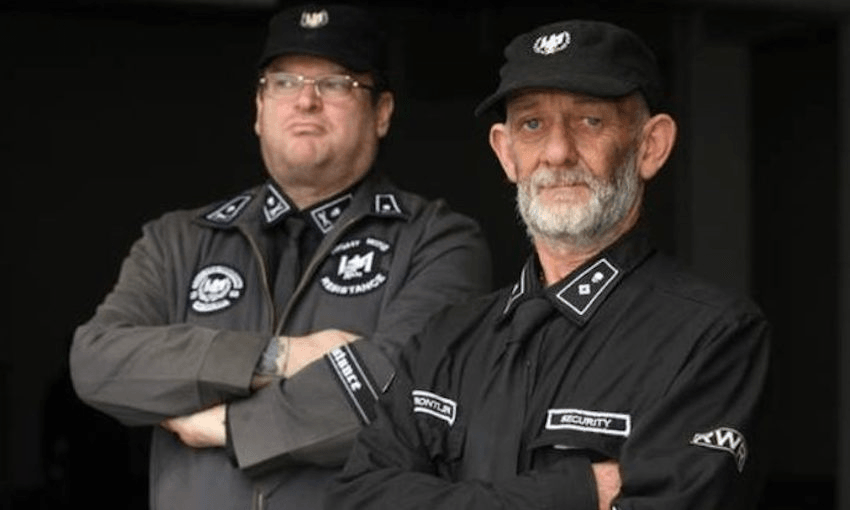A former leader of NZ’s far right communities says groups have closed up shop, but we must interrogate their claims and listen to the voices they try to speak over. Kate Hannah writes for RNZ.
“The ideal subject of totalitarian rule is not the convinced Nazi or the convinced Communist, but people for whom the distinction between fact and fiction (i.e., the reality of experience) and the distinction between true and false (i.e., the standards of thought) no longer exist” – Hannah Arendt wrote in The Origins of Totalitarianism.
After Christchurch, New Zealand’s media is grappling with what it is to fairly, equitably, and safely report on the crime, criminal, and discourses that motivated and encouraged the accused attacker. In large part, there’s been much to admire in the past ten days. However, on Wednesday 27 March – less than two weeks after the Christchurch mosque terror attacks by a single, avowed white supremacist – a number of media organisations, including Radio New Zealand, published interviews with Kyle Chapman, a prominent member and former leader of New Zealand’s far right communities.
Interviewing someone who has deep knowledge of these communities can, of course, be of immense value to understanding how the overlapping agendas of nationalism, nativism, the far right, alt-right, and neo-Nazi groups contributed to the discussions which encouraged this terrorist. However, Chapman’s interviews were an object lesson in the tactics these groups use to legitimise themselves through media manipulation – one which I hope New Zealand media will pay careful attention to.
Chapman began by simultaneously claiming distance from these groups – he stood down as National Front leader in 2009 – and revealing his closeness to the inner circle. According to him, the National Front is ‘closing’, and the Dominion Movement – a younger, so-called ‘alt’ right group – has shut down its public presence and gone silent. “There are pretty much no groups left,” he said.
He then uses a tactic often seen in fascist groups – creating false separation, in order to legitimise the group/s depicted as most ‘reasonable.’ Newer groups – the Dominion Movement – are not proper nationalists, which denigrates that groups and validates his former group, the National Front, as “true” nationalists. In a clever piece of linguistic sophistry, Chapman then describes the National Front as being like the gangs (Mongrel Mob, Black Power, etc) – a place for disaffected, marginalised men to gather, but posing “little threat”.
This claim should have been, and hopefully will be, interrogated. On one hand, some gangs have been working hard in the last years to be accepted and acceptable in parts of New Zealand society. On the other, gang violence is still a significant contributor to crime statistics.
So if Chapman wants to make that comparison, what work has the National Front done? And does comparing these groups to gangs really suggest they pose “little threat”?
Chapman’s claim to be no longer involved in “politics” also requires careful questioning: he still wears many of the symbols of the far right, and as recently as 2017 was offering advice to student groups attempting to set up ‘alt’ right groups on various New Zealand campuses. He is clearly still in direct contact with the groups he once led and failed to answer direct questions about repudiating their ideas.
Chapman’s bait and switch presents an acceptable face of white supremacism to Pākehā New Zealand – those kids over there, they’re ‘alt’-right, they won’t last, they’ve folded at the bad publicity, but these guys over here – well they’ve earned the right to be considered legitimate. DON’T BE FOOLED. We’re being gaslit.
How can we tell? From Chapman’s own words: he blames the media for what is described as a ‘backlash’ against the ‘good’ Nazis. Claiming people have been driven underground, lost their jobs, been harassed. He assumes a victim status for white supremacists, a standard tactic of the abuser – “I’m the real victim here, look what you have driven me to” – and then warns it will be harder for the police and SIS to monitor their activities because of this ‘harassment’.
If, and I very much question the value of doing so, media are going to continue to talk to Chapman or others of his ilk, they must be challenged at every claim. When he uses words like “harassment”, and claims people have lost jobs: Who? Where? When? He gives no evidence, provides no context, and, this is critical, answers very few direct questions.
Chapman claimed that New Zealand’s far right have closed up shop and gone into hiding. Yet yesterday, new Dominion Movement stickers were posted on Kelburn Parade in Wellington. Last week, after the attacks, there were new white supremacist posters on the University of Auckland campus. They have not been silenced. They are not the victims. They do not represent a legitimate political position. We must interrogate their claims and listen to the voices they try to speak over, or we are complicit.
This story first appeared on RNZ.
* Kate Hannah is a historian of science who has worked previously in Holocaust and trauma histories. She is a PhD candidate in the Centre for Science and Society at Victoria University of Wellington, and a Research Fellow in Physics at the University of Auckland.
